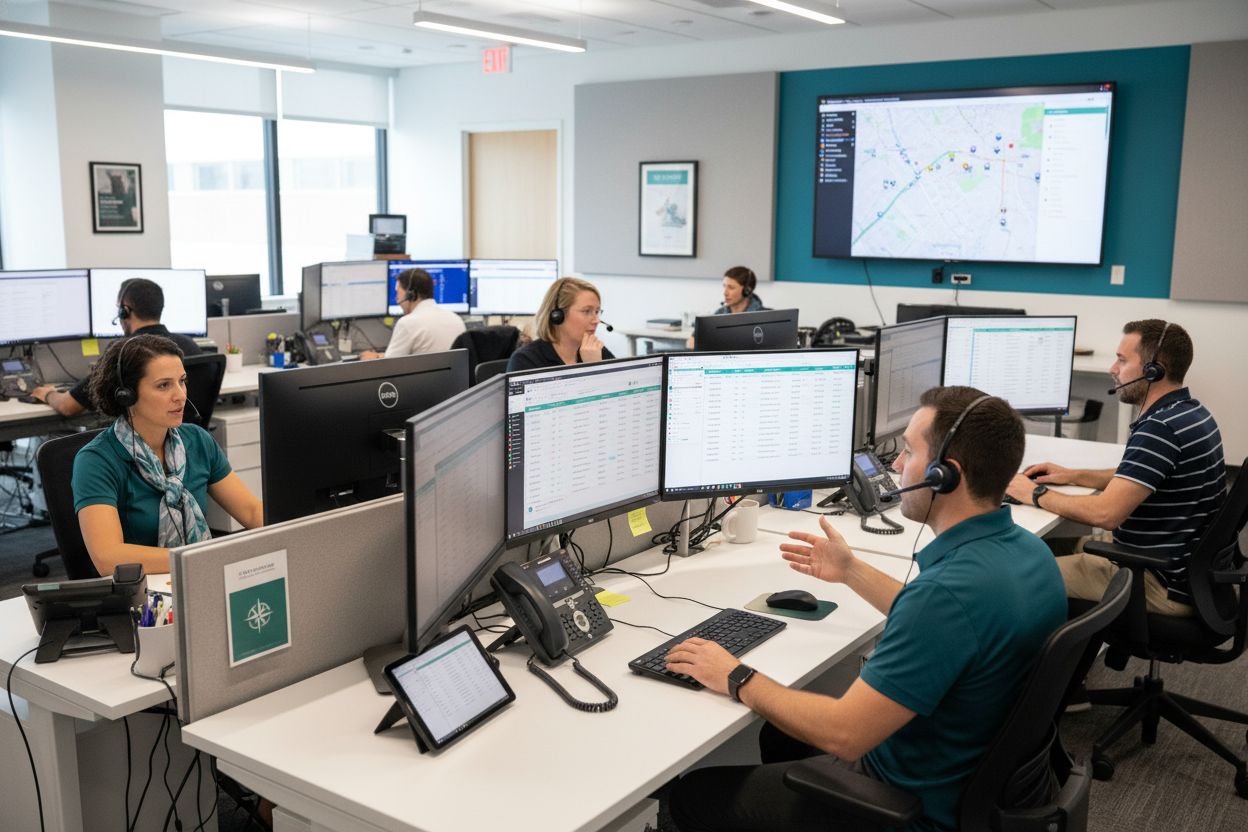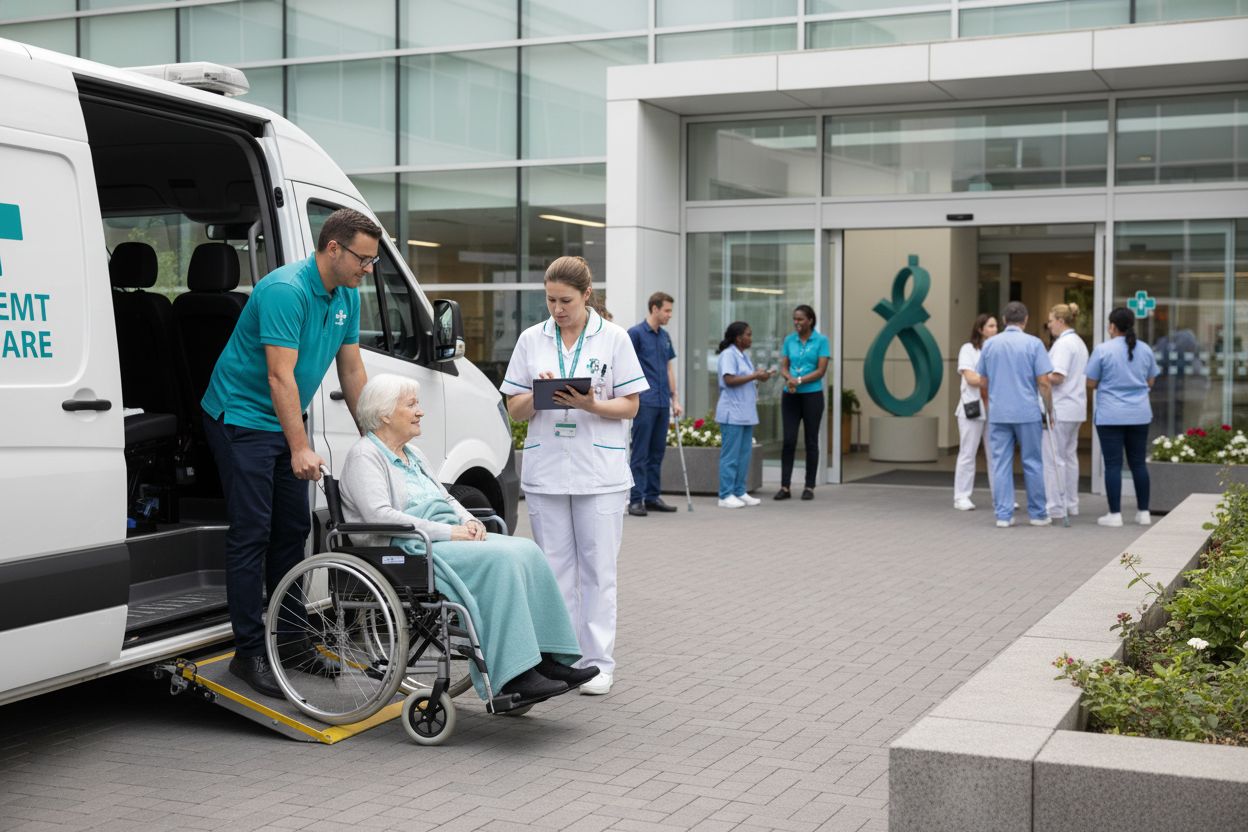Low Cost Non Emergency Medical Transportation Explained
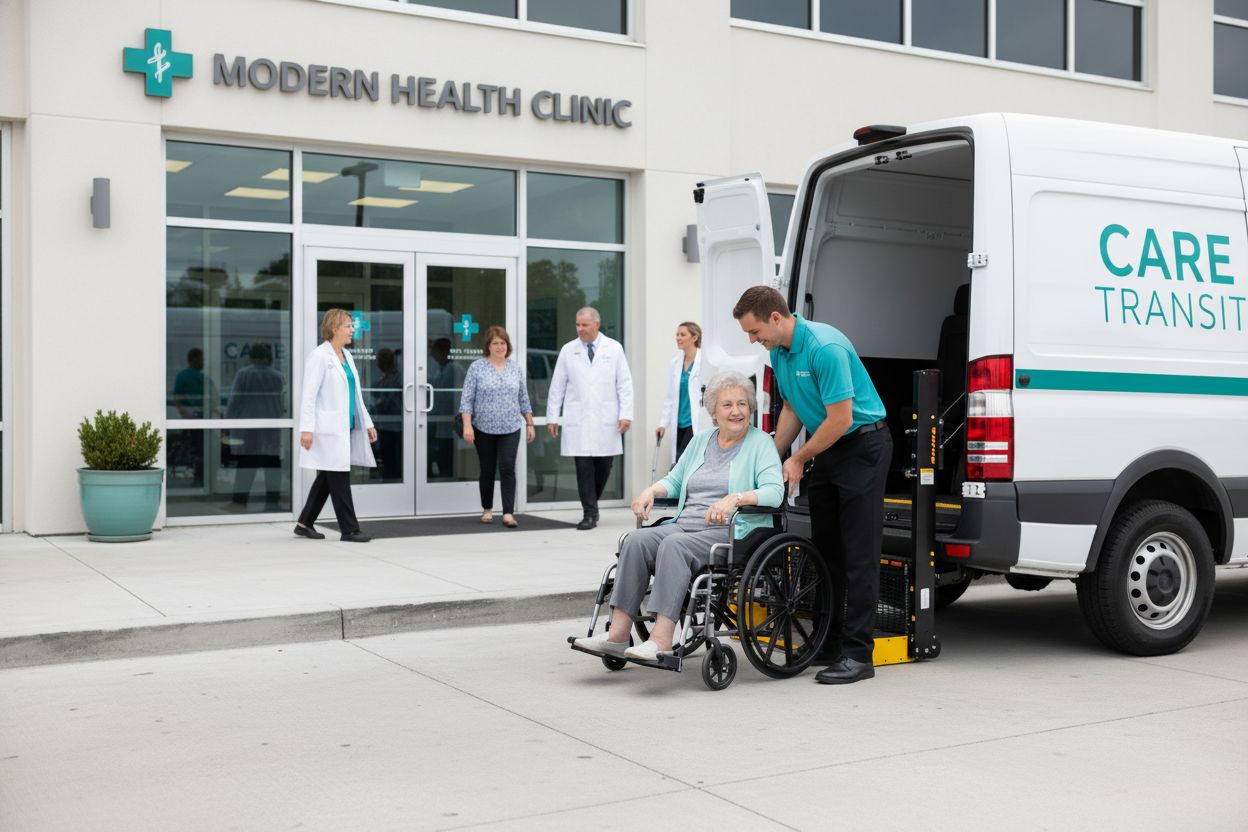
Did you know that more than 3.6 million Americans miss or delay medical appointments each year because they lack reliable transportation? For people facing chronic illness, disabilities, or limited income, this gap can lead to worsening health and unexpected hospital visits. Understanding the many low cost non emergency medical transportation options gives patients and families the power to access care with confidence while avoiding unnecessary complications.
Key Takeaways
| Point | Details |
|---|---|
| NEMT Importance | Non-emergency medical transportation (NEMT) is essential for ensuring access to medical care for patients without alternative transportation options, particularly for low-income and Medicaid beneficiaries. |
| Service Types | NEMT encompasses various service types such as public transit, mileage reimbursement, and specialized transport, catering to diverse patient needs. |
| Coordination Models | States utilize multiple coordination models for NEMT, including third-party brokers and managed care integration, to optimize transportation efficiency and patient access. |
| Regulatory Compliance | NEMT operates under strict regulations that guarantee patient safety, service quality, and compliance with HIPAA standards to protect patient information. |
Table of Contents
- Defining Low Cost Non Emergency Medical Transportation
- Types Of Non Emergency Medical Transport Services
- How Scheduling And Coordination Work
- Regulations, Compliance, And Safety Standards
- Eligibility, Payment, And Cost Management
- Comparing NEMT To Alternative Transportation Options
Defining Low Cost Non Emergency Medical Transportation
Non-emergency medical transportation (NEMT) represents a critical healthcare service designed to support patients who cannot independently travel to medical appointments. Our comprehensive guide on NEMT services helps explain this essential mobility solution.
According to the Medicaid and CHIP Payment and Access Commission, NEMT is a mandatory Medicaid benefit in the United States that provides transportation to medical facilities for enrollees without alternative transportation options. The service encompasses multiple transportation methods:
- Taxicabs
- Public transit systems
- Van programs
- Personal vehicle reimbursement
- Family or friend transportation compensation
The Kaiser Family Foundation research highlights that NEMT serves a crucial role for low-income individuals, particularly Medicaid beneficiaries. By facilitating access to preventive and chronic care appointments, these transportation services achieve remarkable healthcare outcomes. Studies demonstrate that NEMT is remarkably cost-effective, helping patients:
- Reduce emergency room visits
- Improve overall health management
- Ensure consistent medical care access
- Minimize treatment disruptions
Unlike emergency medical transportation that responds to urgent health crises, NEMT focuses on planned, scheduled medical interactions. This strategic approach ensures patients can attend routine check-ups, specialist consultations, physical therapy sessions, and ongoing treatment appointments without transportation barriers.
Types of Non Emergency Medical Transport Services
Non-emergency medical transportation (NEMT) encompasses diverse service types designed to meet varying patient mobility needs. Learn more about our comprehensive NEMT services to understand the breadth of transportation options available.
According to Connecticut’s Department of Social Services, NEMT modes include multiple transportation methods tailored to specific patient requirements:
- Public Transit: Bus passes for patients who can independently travel
- Mileage Reimbursement: Compensation for personal vehicle use
- Livery Services: Professional transportation for ambulatory patients
- Wheelchair Transportation: Specialized vehicles with lifts and trained drivers
- Non-Emergency Ambulance: Transport for patients requiring medical supervision
- Air Ambulance: Long-distance medical transport with prior approval
Route Genie’s research highlights the specialized nature of these services. Wheelchair transportation involves vehicles equipped with specialized lifts and drivers trained to assist patients with mobility challenges. Stretcher transport serves bedridden patients, typically requiring a two-person staff to ensure safe and comfortable movement.
Beyond patient transport, some NEMT services extend to medical supply courier services. These specialized transportation options require strict adherence to HIPAA regulations and precise medical handling protocols, ensuring patient confidentiality and medical supply integrity throughout the transportation process.
Here’s a comparison of common NEMT service types and their key features:
| Service Type | Patient Need | Vehicle/Staff Requirements |
|---|---|---|
| Public Transit | Ambulatory, independent travel | Standard bus/train |
| Mileage Reimbursement | Family/friend transportation | Personal vehicle Proof of mileage |
| Livery Services | Ambulatory, professional transport | Standard car/van Professional driver |
| Wheelchair Transportation | Limited mobility, wheelchair users | Vehicle with lift Trained driver |
| Non-Emergency Ambulance | Medical supervision needed | Ambulance Medical staff |
| Air Ambulance | Long-distance, complex care | Aircraft Specialized medical crew |
How Scheduling and Coordination WorkNon-emergency medical transportation (NEMT) scheduling involves complex coordination mechanisms designed to ensure efficient and reliable patient transport. Learn more about advanced scheduling strategies to understand the intricate logistics behind these services.
According to the Medicaid and CHIP Payment and Access Commission, states implement multiple delivery models for NEMT coordination:
- Third-Party Broker Model: Centralized coordination through specialized agencies
- Fee-for-Service State Coordination: Direct state management of transportation
- Managed Care Integration: Transportation services embedded within healthcare plans
- Mixed Approach: Hybrid models tailored to regional requirements
The National Conference of State Legislatures reveals that NEMT administrative frameworks typically involve sophisticated coordination strategies. These include:
- Centralized call centers for trip authorization
- Comprehensive patient eligibility verification
- Real-time transportation network management
- Detailed trip routing and optimization
Each delivery model aims to balance cost-effectiveness with patient accessibility. By leveraging technology and strategic partnerships, NEMT services create seamless transportation solutions that connect patients with critical medical appointments, ensuring no individual lacks necessary healthcare access due to transportation barriers.

Regulations, Compliance, and Safety Standards
Non-emergency medical transportation (NEMT) operates within a complex regulatory landscape designed to protect patient safety and ensure service quality. Explore our comprehensive guide to healthcare compliance to understand the intricate standards governing these critical services.
According to the Federal Transit Administration and Centers for Medicare & Medicaid Services, NEMT regulations encompass multiple critical domains:
- Patient Safety: Mandatory driver background checks
- Vehicle Standards: Specific equipment and maintenance requirements
- Accessibility Compliance: ADA regulations for transportation
- Privacy Protection: HIPAA compliance for patient information
- Medical Coordination: Verified medical necessity documentation
The National Emergency Medical Transportation Accreditation Commission (NEMTAC), an ANSI-accredited standards developer, establishes rigorous national standards for NEMT providers. These standards focus on:
- Comprehensive risk mitigation strategies
- Consistent service quality across different regions
- Accountability mechanisms for transportation providers
- Standardized operational protocols
These regulatory frameworks ensure that NEMT services maintain the highest levels of patient care, safety, and operational excellence. By implementing strict guidelines and continuous oversight, these standards protect vulnerable populations and guarantee reliable, professional medical transportation services.
Eligibility, Payment, and Cost Management
Non-emergency medical transportation (NEMT) eligibility and payment structures represent complex systems designed to support vulnerable populations. Learn more about healthcare logistics cost optimization to understand the intricate financial mechanisms behind these services.
According to the Kaiser Family Foundation, Medicaid programs are federally mandated to provide transportation services with specific eligibility guidelines:
- Mandatory Coverage: Required for all Medicaid beneficiaries
- Children’s Access: Guaranteed under Early Periodic Screening, Diagnostic, and Treatment (EPSDT) guidelines
- Federal Funding: Matched funding rates for transportation services
- Cost-Effective Approach: Proven to reduce missed medical appointments
The Medicaid and CHIP Payment and Access Commission highlights several cost management strategies states employ:
- Copayment Structures: Nominal fees to manage utilization
- Trip Limitations: Restrictions on number of transportations
- Prior Authorization: Verification processes for medical necessity
- Reimbursement Models: Including
- Mileage-based payments
- Flat-rate provider compensation
- Direct enrollee reimbursement
These sophisticated eligibility and payment frameworks ensure that non-emergency medical transportation remains an accessible, sustainable service that supports critical healthcare access for low-income and medically vulnerable populations.
Comparing NEMT to Alternative Transportation Options
Non-emergency medical transportation requires careful consideration of multiple mobility options. Explore our comprehensive guide to transportation alternatives to understand the nuanced landscape of patient transportation.
According to the Federal Transit Administration’s Coordinated Community Access and Mobility (CCAM) inventory, transportation alternatives extend far beyond traditional NEMT services:
- Public Transit: Standard bus and train systems
- Ride-Sharing Services: On-demand transportation options
- Personal Vehicle Use: Mileage reimbursement programs
- Human Services Transportation: Specialized community programs
Route Genie’s research highlights key considerations for selecting transportation modes:
- Patient Mobility Level
- Ambulatory patients: More flexible options
- Limited mobility patients: Specialized transport required
- Cost Considerations
- Public transit: Most economical
- Ride-sharing: Moderate cost
- Specialized NEMT: Highest expense
- Medical Complexity
- Simple appointments: Standard transportation
- Complex medical needs: Dedicated medical transport
Over 130 federal programs exist to support transportation for individuals with disabilities or low income, demonstrating the complex ecosystem of mobility solutions beyond traditional non-emergency medical transportation services.
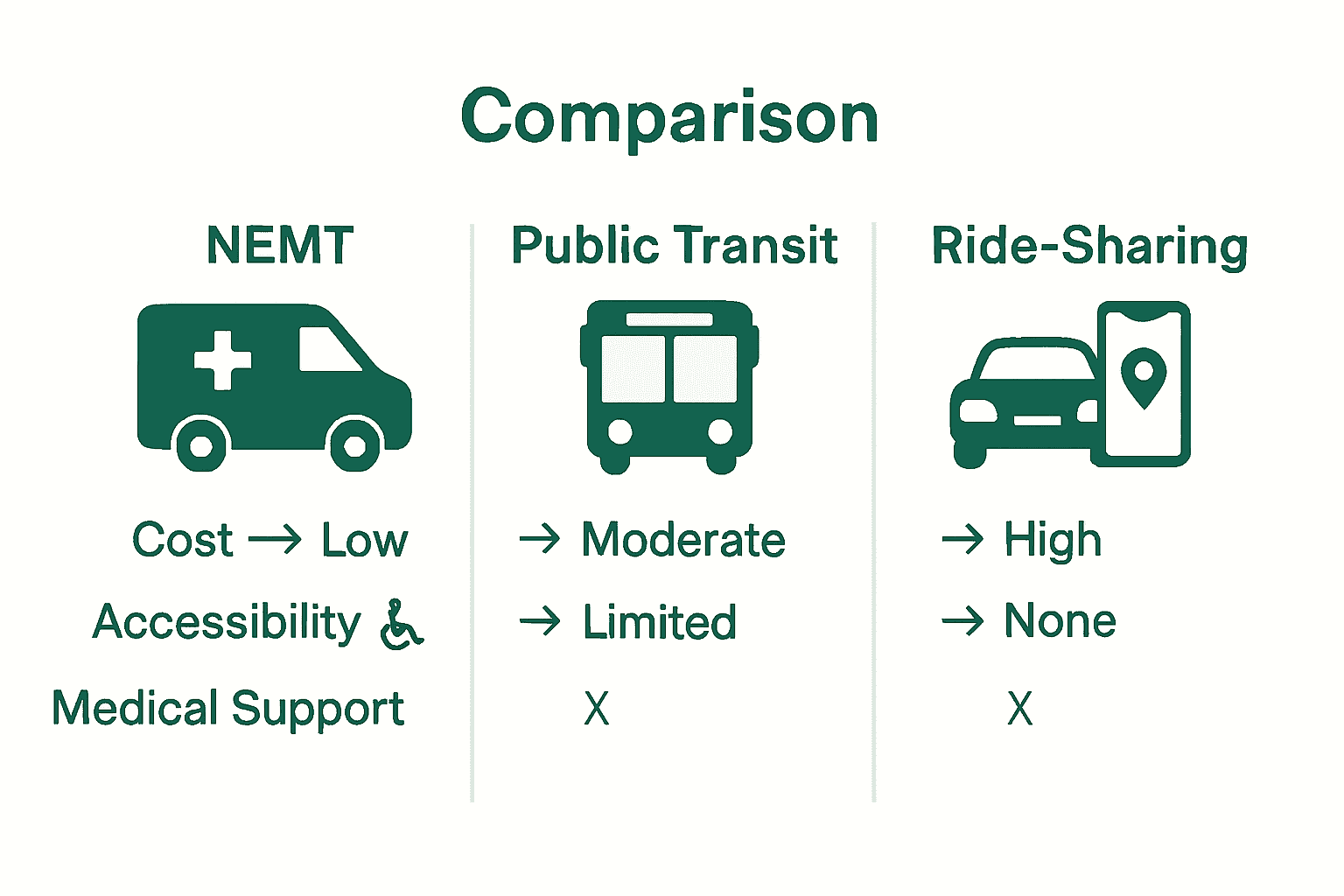
Ready to Transform Your Non-Emergency Medical Transportation?
Struggling with rising costs, complicated scheduling, or unreliable patient transport? The article explained why low cost non emergency medical transportation is essential for preventing missed appointments and improving outcomes, but achieving consistent, compliant, and efficient rides is still a challenge for many organizations. If you want to eliminate preventable delays, lower administrative burden, and create a seamless patient experience, it’s time to explore what modern digital workflows can do for your team.
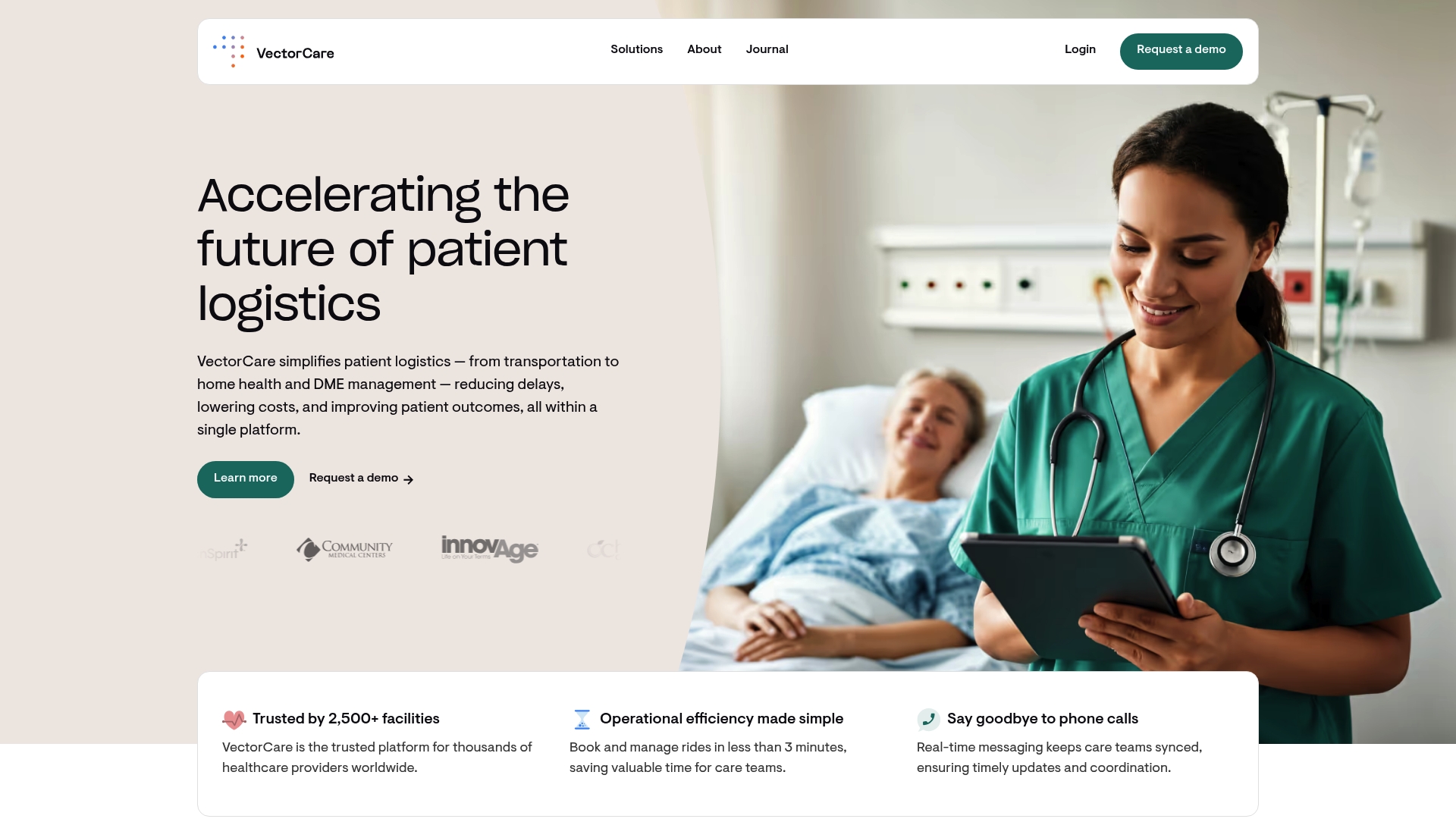
Discover how VectorCare’s platform brings order to chaos. We offer all-in-one tools designed to automate scheduling, optimize routing, and streamline communication between hospitals, payers, and transportation vendors. With real-time updates and powerful AI dispatching, you can coordinate every ride and medical equipment delivery with confidence. Stop letting gaps in transport disrupt care. Start your journey to coordinated, cost-effective logistics with VectorCare today—see how easy better patient transportation can be.
Frequently Asked Questions
What is Non-Emergency Medical Transportation (NEMT)?
Non-Emergency Medical Transportation (NEMT) is a healthcare service that provides transportation to patients who need assistance getting to medical appointments but do not have access to alternative transportation. It includes various transport methods like taxis, public transit, or specialized vehicles.
Who is eligible for NEMT services?
Eligibility for NEMT services typically includes Medicaid beneficiaries, especially those without other transportation options. Children may also qualify under specific guidelines that ensure access to medical care.
How do NEMT scheduling and coordination work?
NEMT scheduling involves complex coordination, often managed through third-party brokers or state programs. This includes centralized call centers for trip authorization and real-time management of transportation networks to ensure efficient patient transport.
What are the different types of NEMT services available?
NEMT services range from public transit options and mileage reimbursement for personal vehicle use to wheelchair transportation for those with mobility issues and non-emergency ambulance services for medically supervised transport.

